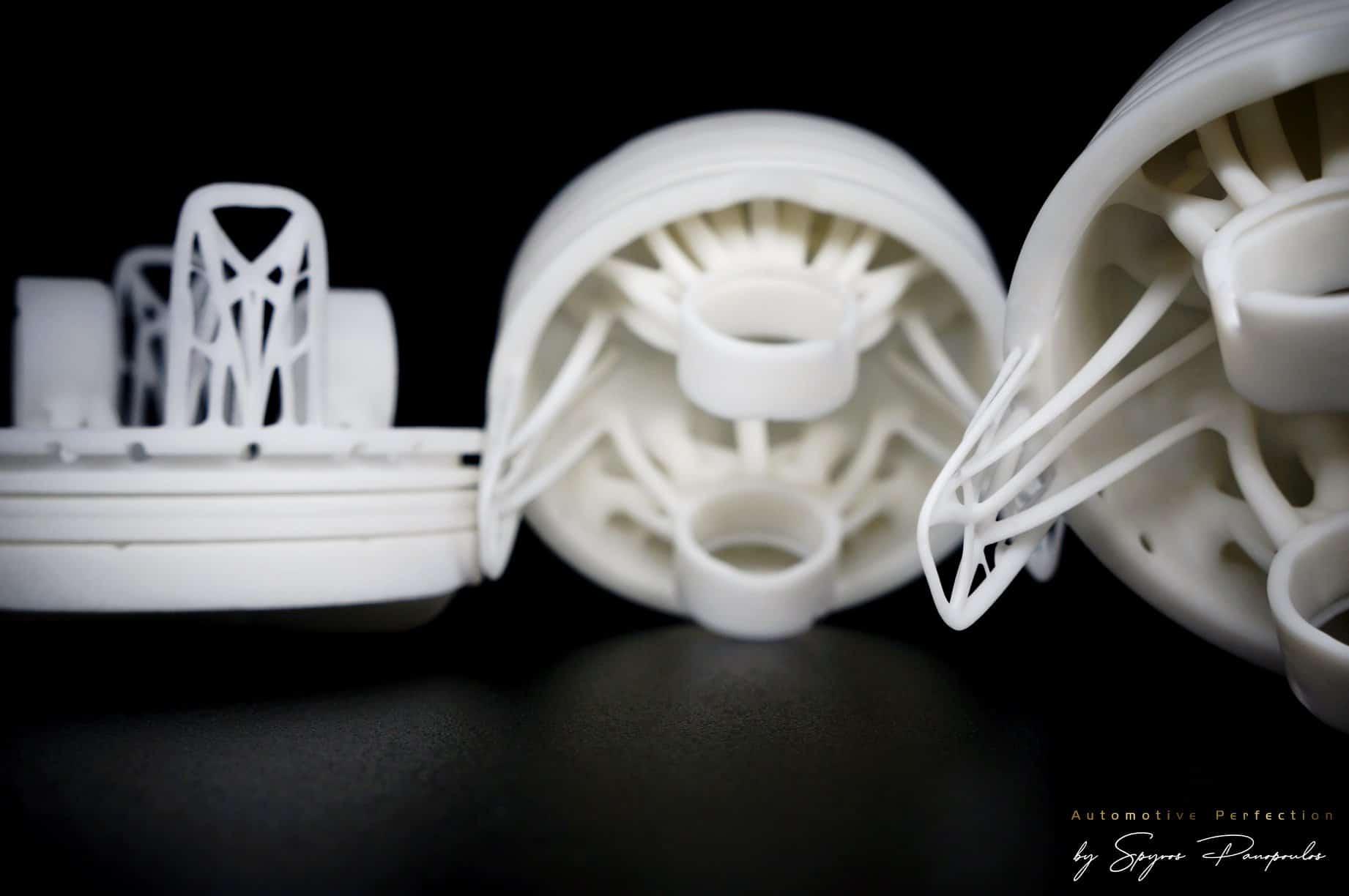The world’s first additively manufactured car engine piston, made entirely with ceramic, has been developed by Spyros Panopoulos Automotive (SPA) for its Chaos Ultra car using XJet technology.
Spyros Panopoulos – SPA Founder, a pioneer in the automotive industry, and the man behind the ‘most efficient combustion engine on the planet’ – is pursuing speeds of over 500 kph and acceleration from 0 to 100kph in 1.55 seconds for the Chaos, which is currently in development. Consequently, it has the fastest-revving production car engine ever seen, reaching up to 12,200 RPM and a notable 3,065 horsepower.
To make the engine a reality, and support the extreme levels of performance required, the unique ‘anadiaplasi’ piston was designed. ‘Anadiaplasi’ is Spyros Panopoulos’ proprietary method of design for AM in which a component takes its shape based on the forces acting on it. Material is minimized where it doesn’t support performance and added where reinforcement is needed, optimizing weight while maintaining the strength and temperature resistance of the part – essential for any piston, but particularly testing in such a high-performing engine. The result is an organic, complex shape that is light, yet strong. This technique is implemented throughout the Chaos Ultra car.
On concluding the design, Panopolous realized that to produce such complex geometry – along with the high accuracy and excellent surface finish required – the only relevant manufacturing technology was additive manufacturing. His choice was XJet Nanoparticle Jetting. Working in collaboration with Lino 3D, XJet’s business partners in Greece, SPA selected XJet Alumina material for the Chaos piston due to its significant strength, hardness, light-weight, and almost total resistance to thermal expansion.
Manufacturing on Demand
“Ceramic offers many advantages compared to other materials,” said Panopolous. “Harder and stiffer than steel, more resistant to heat and corrosion than metals or polymers, and weighing significantly less than most metals and alloys. XJet’s alumina parts will withstand the high temperatures expected to develop within the combustion chamber as well as on the fast-moving parts.”
“XJet systems are uniquely capable of producing this part in ceramic, and there’s absolutely no room for error in this project.”
An advocate of additive manufacturing, Panopolous is putting it to use throughout the Chaos Ultra car with a reported 78 percent of the body being 3D printed as well as other crucial elements such as the engine block, camshaft, and intake valves.
“We are proud to be using such progressive technology in our Ultra car,” stated Panopolous. “Our projects push performance to the extreme and so we are extremely selective about the materials and technologies we use. I believe this is the first time ceramic AM is being used in motorsport and I feel privileged to take that pioneering step.”
Haim Levi, XJet VP of Strategic Marketing, said, “SPA is taking ceramic additive manufacturing and design for AM – DfAM – to the edge and beyond with their work on the Chaos Ultra car. We’re extremely proud to be part of such a trailblazing project by offering the top-level capabilities of our technology and system. Designers and engineers from a wide range of industries and applications are exposed to new options now opened for them. We expect the Chaos project ceramic piston to ignite their creativity and imaginations and push the limits in the automotive industry and beyond.”
* This article is reprinted from 3D Printing Media Network. If you are involved in infringement, please contact us to delete it.
Author: Edward Wakefield


Leave A Comment